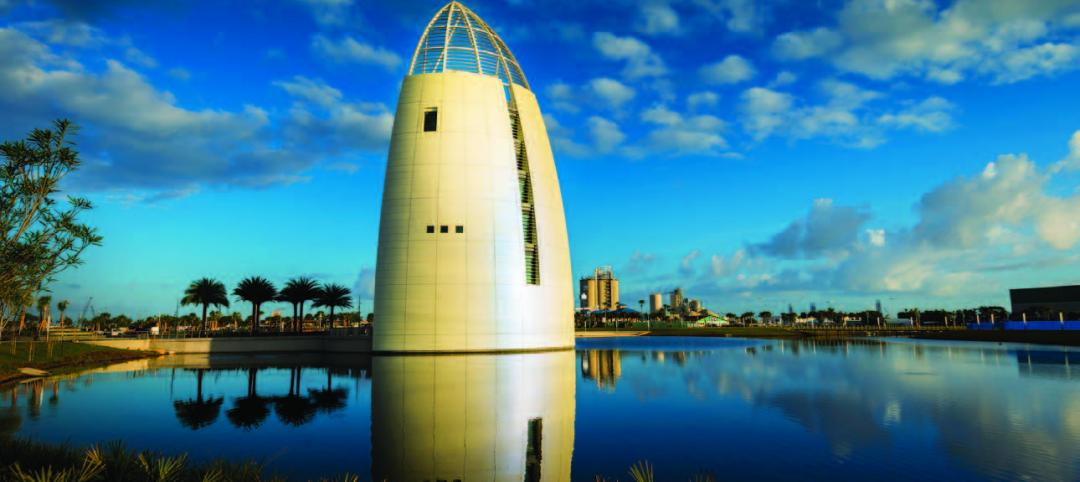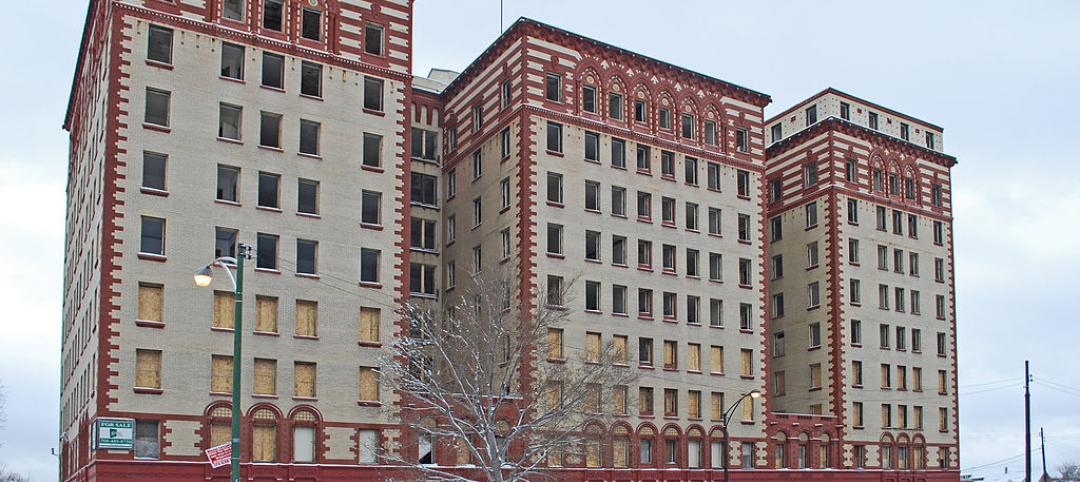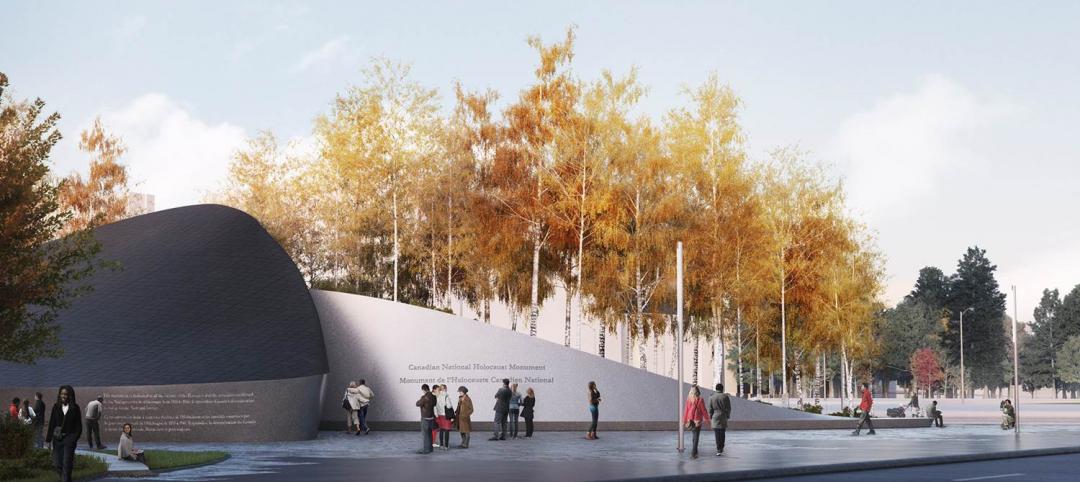During an unforgettable, transformative year, the National Trust for Historic Preservation unveils its much-anticipated list of America’s 11 Most Endangered Historic Places. The good news is that these potential losses are wholly preventable, if we decide to take action to save 11 places that have made a lasting impact on American culture.
“It is at times like these,” said Paul Edmondson, President of the National Trust for Historic Preservation, “when cultural treasures mean the most. They remind us of what we have accomplished as a people during other periods of struggle, they mark the pathways we have traveled as a nation, and they remind us of who we can become if we work to realize the promise of our society. When so many are questioning the way forward, historic places have the power to reveal the possibilities of our future. These 11 places are all endangered, and all need our help to save them.”
Annually, this list spotlights important examples of our nation’s architectural and cultural heritage that, without applied action and immediate advocacy, will be destroyed or face irreparable damage. Due to the passionate work of preservationists, Trust members, donors, concerned citizens, government agencies and businesses, placement on the 11 Most list is often the saving grace of important cultural landmarks. In the 33-year history of this 11 Most Endangered Historic Places List, more than 300 places have been declared under imminent threat of destruction, and 95 percent of them have been saved by the advocacy and attention brought to their plight by their placement on this list.
“I am particularly proud,” Edmondson continued, “of this year’s 11 Most Endangered List because it so ably demonstrates the Trust’s commitment to tell the full American story. We believe that diversity in preservation can help change false narratives that can lead to misunderstanding and division in our society. This year’s list underscores that many cultural perspectives have helped define what it means to be American.”
“These 11 Most Endangered Historic Places demonstrate that there is a great urgency to ensure that we preserve and revere the places that tell the full, true history of the United States,” said Katherine Malone-France, the Trust’s Chief Preservation Officer. “In a time of challenge in this country, preservation represents a kind of optimistic reinvestment in our nation that can give hope to communities and bring people together. Preservation is a way of reaffirming our commitment to each other because it is a tangible way in which we demonstrate respect for one another’s contributions to our shared heritage. As dedicated supporters seek to restore vibrancy and vitality to these places, they enrich our communities, our economy, and our culture.”
Many of these sites offer important opportunities for concerned citizens to take action and to advocate in favor of saving American heritage. To learn more about this year’s list and find out what you can do to help preserve them, go to www.SavingPlaces.org/11Most.
The 2020 list of America's 11 Most Endangered Historic Places (in alphabetical order):
Alazan-Apache Courts, San Antonio, Texas
Opened in 1940-41, the Alazan-Apache Courts—aka Los Courts—is the oldest and largest extant public housing complex in San Antonio. Conceived at a time when housing, schools, and public facilities were legally segregated, Los Courts provided affordable housing for San Antonio’s majority Mexican American Westside, where families struggled with poverty, lack of municipal services, severe flood conditions, and high death rates. Though Alazan-Apache Courts provide the San Antonio community with affordable housing and represent a part of Mexican American history, the San Antonio Housing Authority is planning to demolish these historic structures.
Hall of Waters, Excelsior Springs, Missouri
About 30 miles northeast of Kansas City, the Hall of Waters was built in 1938 with assistance from the Public Works Administration as a mineral water health resort. At one time, the facility bottled and sold four distinct types of mineral waters, and also featured “the world’s longest water bar,” a complete health spa, and a competition-size swimming pool. While the building, which is owned by the City of Excelsior Springs, still operates as city offices and a tourism welcome center, it has more than $16 million in rehabilitation needs, exceeding what this small community can undertake with public funds.
Harada House, Riverside, California
As the subject of a landmark Superior Court decision granting the Harada family the right to continue to own the property, the Harada House represents an early challenge to restrictive anti-immigrant and racist property laws and a test of laws that defined citizenship by birth. The Harada family, comprised of Japanese immigrants and American-born citizens, lived in the home until forcibly incarcerated in 1942. They returned there after the war and maintained ownership until Sumi Harada died in 2000. Harada House has fallen into such disrepair it is now at risk of collapse. Local advocates have launched a campaign to rehabilitate the house and open it to the public as part of the Museum of Riverside.
National Negro Opera Company House, Pittsburgh, Pennsylvania
Built in 1894, this residential property served as headquarters for the National Negro Opera Company, the nation’s first Black opera company, established by Madame Mary Cardwell Dawson in 1941. The home also provided temporary rooming quarters for singer Lena Horne and sports heroes such as Steelers Roy Jefferson, John Nesby, and Marvin Woodson and Pittsburgh Pirates legend Roberto Clemente. The house is now vacant and severely deteriorated, but local advocates are working with community partners to create a plan for stabilization and identify potential new uses that honor the building’s legacy.
Ponce Historic Zone, Ponce, Puerto Rico
Located in southern Puerto Rico, Ponce is the island’s second largest city and a major contributor to its political, social, economic, and cultural development. With architecture reflecting this history, Ponce’s downtown is a Designated Historic Zone, one of the island’s first and largest. Beginning in December 2019, regular earthquakes and tremors have caused extensive structural damage to Ponce’s historic architecture, compounding the damages caused by Hurricane Maria three years ago. Local and government organizations are working on a Recovery Plan for the Ponce Historic Zone but will need significant funding and support.
Rassawek, Columbia, Virginia
Rassawek is located at the fork of the Rivanna and James rivers and was the historical capital of the Monacan Indian Nation, the town to which all others in the Monacan Confederacy paid tribute. Today the confluence of the rivers, known as Point of Fork, contains at least six National Register-eligible archaeological sites and the final resting places of Monacan ancestors. The James River Water Authority (JRWA) plans to build a water pumping facility on the Point. Though the Monacan Indian Nation has proposed alternative locations, JRWA contends the Rassawek site is more economical.
Roberts Temple Church of God in Christ, Chicago, Illinois
The funeral and extended visitation for Emmett Till held September 3-6, 1955, at Roberts Temple Church of God in Christ were pivotal events in American history. Mamie Till-Mobley’s insistence on an open casket funeral at Roberts Temple—allowing mourners to see the condition of her 14-year-old son's body, brutally murdered in Mississippi after being accused of whistling at a white woman—appalled and angered the thousands who waited in long lines to pay their respects, and helped catalyze the Civil Rights movement. Though listed as a Chicago Landmark for its association with Emmett Till’s funeral, the church today has severe structural issues and is only minimally used by the congregation. To ensure long-term viability, the building needs rehabilitation funding and partnerships.
Sun-n-Sand Motor Hotel, Jackson, Mississippi
A Midcentury Modern building in the heart of downtown Jackson near the State Capitol, the Sun-n-Sand Motor Hotel was once the home away from home for Mississippi legislators as well as a gathering place for civil rights activists—most notably the multi-racial, women-led initiative “Wednesdays in Mississippi.” The building, which features metal screens, large expanses of glass, and a colorful sign, has sat vacant and deteriorating for nearly two decades. The State of Mississippi purchased the Sun-n-Sand in 2019 and plans to demolish it for a parking lot, but preservationists are advocating for reuse, emphasizing the economic benefits of rehabilitation.
Terrace Plaza Hotel, Cincinnati, Ohio
Completed in 1948, the Terrace Plaza Hotel was one of the first post-war hotels in America, and the first hotel by Skidmore, Owings and Merrill (SOM). Pioneering female architect Natalie de Blois played a major role in the hotel’s design. Mostly vacant since 2008, the hotel is deteriorating. Local landmark designation passed the Historic Conservation Board in 2019. Local advocates believe that rehabilitating the Terrace Plaza will not only preserve a key early modern landmark but will provide economic benefits for downtown Cincinnati.
West Berkeley Shellmound and Village Site, Berkeley, California
This site— one of the most important and earliest known Ohlone settlements on the shores of San Francisco Bay, with a village dating back 5,700 years—served as a burial and ceremonial ground, as well as a lookout and communications site, with the repository of shells, ritual objects, and artifacts forming a massive mound. When Spanish missions began enslaving Ohlone people, many remaining villagers fled. Shell material was later removed by Gold Rush settlers to fertilize farms and line streets. The site was mapped in 1907, and UC Berkeley archaeologists removed 94 human burials and 3,400 artifacts before the shellmound was leveled in the 1950s. Today, the site is still an active place of Ohlone prayer and ceremony, and burials likely remain under the surface throughout the area—currently a paved parking lot. Although plans to build a large condo project on the site are now on hold, the privately owned site’s future is uncertain.
Yates Memorial Hospital, Ketchikan, Alaska
Built in 1905 as a clergy house for the Episcopal Mission, the building was re-purposed in 1909 to serve as a 12-bed hospital during the boom years of Ketchikan’s growth. Many dedicated and determined women worked tirelessly as nurses, under very difficult conditions, to care for the sick and injured there. The building has been vacant for 15 years and is suffering from a failing roof, foundations, and interior deterioration. Local supporters are raising funds to restore the building to include a museum featuring the nurses’ stories, although the future financial impacts of the COVID crisis on Ketchikan’s tourism-based economy are still unknown.
Related Stories
| Mar 26, 2014
Zaha Hadid's glimmering 'cultural hub of Seoul' opens with fashion, flair [slideshow]
The new space, the Dongdaemun Design Plaza, is a blend of park and cultural spaces meant for the public to enjoy.
| Mar 25, 2014
Sydney breaks ground on its version of the High Line elevated park [slideshow]
The 500-meter-long park will feature bike paths, study pods, and outdoor workspaces.
Sponsored | | Mar 21, 2014
Kameleon Color paint creates color-changing, iridescent exterior for Exploration Tower at Port Canaveral
Linetec finishes Firestone’s UNA-CLAD panels, achieving a one-of-a-kind, dynamic appearance with the first use of Valspar’s new Kameleon Color
| Mar 20, 2014
Common EIFS failures, and how to prevent them
Poor workmanship, impact damage, building movement, and incompatible or unsound substrate are among the major culprits of EIFS problems.
| Mar 13, 2014
Do you really 'always turn right'?
The first visitor center we designed was the Ernest F. Coe Visitor Center for the Everglades National Park in 1993. I remember it well for a variety of reasons, not the least of which was the ongoing dialogue we had with our retail consultant. He insisted that the gift shop be located on the right as one exited the visitor center because people “always turn right.”
| Mar 12, 2014
14 new ideas for doors and door hardware
From a high-tech classroom lockdown system to an impact-resistant wide-stile door line, BD+C editors present a collection of door and door hardware innovations.
| Mar 7, 2014
Chicago's 7 most threatened buildings: Guyon Hotel, Jeffrey Theater make the list
The 2014 edition of Preservation Chicago's annual Chicago's 7 list includes an L station house, public school, theater, manufacturing district, power house, and hotel.
| Mar 5, 2014
5 tile design trends for 2014
Beveled, geometric, and high-tech patterns are among the hot ceramic tile trends, say tile design experts.
| Mar 4, 2014
First look: Historic grain silo to become soaring art gallery
British architect Thomas Heatherwick has proposed to repurpose a grain silo into an art gallery in Cape Town, South Africa. The silo is made up of 42-concrete tubes, which Heatherwick plans to make into gallery spaces.
| Feb 28, 2014
Six finalists selected in design competition for Canadian Holocaust monument
David Adjaye and Daniel Libeskind are among the finalists for the National Holocaust Monument, planned near the Canadian War Museum in Ottawa.

















